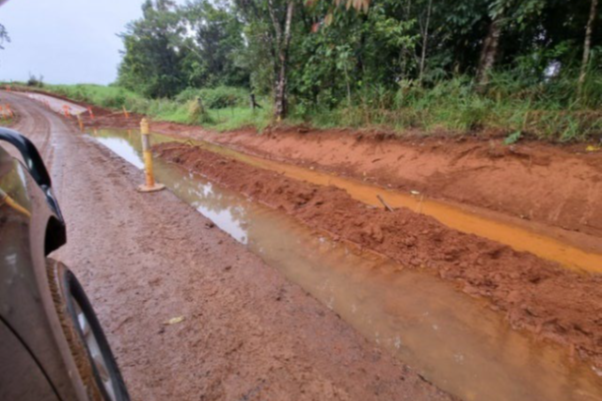General News
11 August, 2022
Questions asked over road budget blowouts
THE budget for another road project has blown out for Tablelands Regional Council and questions are being asked as to why it keeps happening.

The Brooks Road widening project at Mungalli will cost the council almost half a million dollars more after officers recommended a different approach to fixing the road which will result in a more robust outcome they say should last for 25 years.
But some councillors want to know why costs are regularly blowing out for transport network projects such as the $215,000 overspend on replacing the Sluice Creek Bridge at Evelyn in March, and the $425,000 increase to the reseal budget in January this year.
Both times, officers have cited increased costs for materials, a lack of competition in the tendering process and underestimating the scope or complexity of the jobs.
CEO Gary Rinehart gave an undertaking that every project listed for the next three years would be reviewed so the level of design and geotechnical investigations required for each of the projects could be determined now in a bid to avoid a similar situation in the future.
In addition to questions about why the budget needs to increase, Cr Annette Haydon raised her concerns about giving the additional money to existing contractors without going back out to tender.
The Brooks Road project, which is being done in two stages, has not only been plagued with wet weather, but also issues with the construction methodology, prompting the contractors to use a different method in Stage 1 to get the job done which cost an additional $112,000.
With similar conditions expected in Stage 2, contractors advised council to use the new methodology that involves using a cemented base and a new spray seal, which would require an additional $490,000, bringing the total cost of the project to $1.48 million.
But Cr Peter Hodge questioned why investigations prior to tendering for the job had not revealed the issues that have arisen.
“I want to know why we are in this position – I wasn’t in favour the last time we increased the budget for this job – but we need to say to the people we represent why we have to spend another half a millions dollars,” he said.
“Let be fair dinkum, let’s open it up and have a proper discussion and then know how we are going to make sure it doesn’t happen in the future.”
Infrastructure and Planning general manager Mark Vis admitted that officers opted not to undertake geotechnical investigations at the time of design and “assume a bearing ratio of the sub-base but that turns out not to reflective of the actual situation on site”.
He said in the future more preparatory work would be done including surveying and geotechnical investigations before designs are finalised and put out to tender.
“We need to do more homework and have a better understanding of the actual circumstances of the project before we finalise the design – and more time and more effort up front,” Mr Vis said.
Due to the change in the scope of the project and the additional costs, Cr Haydon called for officers to go back out to tender for Stage 2 of the job, saying the tender documents that had been publicly released did not include the modified cement stabilisation base that will be used.
“This is totally different to what went out to tender publicly and I believe it will be unfair and a disadvantage to other contractors if this is given to the current contractor for an extra $490,000 without going back to tender,” she said.
Cr Bilney shared her views, saying going back to tender would comply with council’s procurement policy and be more transparent, but he did have concerns about possibly delaying the job by three months which would then be threatened by the wet season, and could also result in higher costs for materials.
Deputy Mayor Kevin Cardew said while he understood the concerns of his colleagues, be believed council must get on with the job before the wet season arrived and avoid additional costs in materials.
“The anomalies that have come through have been through design factors that were not recognised when the design was done, and the road conditions are a lot worse than originally thought,” he said.
“This is in the wettest party of the shire – contractors are already on site, they have mobilised their equipment, and it is starting to come into the dry part of the season which makes sense in getting in and getting it done - we have very a small window of opportunity in that part of the shire.
“While I understand the concerns of my colleagues, I would rather see amendment to the existing contract which is perfectly lawful from my understanding.”
Mayor Rod Marti said whatever decision the council made, it would result in “reputational damage”.
“The most import thing is that we fix the road as soon as possible,” he said.
Council approved the budget increase, with Crs Haydon and Bilney voting against the recommendation. Stage 2 is expected to be completed by October.



